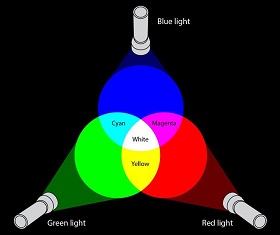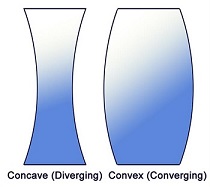This online course will provide you with a strong foundation in Physics and help you understand and learn about theoretical applications. You can start anytime and complete at your own pace – no deadlines.
Gain a fundamental understanding of physics – for preparation when applying theoretical physics in any world situation. This may be anywhere in the field of engineering, health sciences, environmental management or rural industries.


Course Structure:
The duration of this online course is 100 hours. This consists of 10 in-depth lessons:
1: Review of Basic Algebra
- Introduction
- Equations and formulae
- Variables
- Quadratic equations
- Graphing
- Geometry
- Triangles
- Basic formulae
- Quadrilaterals
- Angles and radians
- Logarithms and exponentials
- Trigonometry
2: Introduction – Scope & Nature of Physics
- Observing, measuring, modelling, predicting
- Units of measurement
- Converting between units
- Precision of measurements and identifying significant digits
3: Forces and Mechanics
- Physics and motion
- Displacement
- Speed and velocity
- Acceleration
- Force
- Force of gravity
- Work
- Power
- Energy
4: Waves
- What are waves
- Properties of waves: longitudinal waves, transverse waves
- Wave terminology
- Relationship of frequency or period
- Wave speed
- Electromagnetic radiation and waves
- Sound waves
- Sound spectrum
- Measuring sound
- Speed of sound
- Doppler effect
- Standing waves and resonance
5: Electricity and Magnetism
- Electrostatics
- Conductors and insulators
- How to make an electroscope
- Coulomb’s law
- The electric field
- Electricity and electric circuits
- Current
- Voltage
- Resistance
- Power
- Ohm’s law
- Circuits: series, parallel
- Magnets
- Magnetic forces
- Ferromagnetism
- Creating magnets
- Earth’s magnetic fields
- Geomagnetic reversal
- Electromagnetism
- Electromagnetism and solenoids
- Electric motors
- Magnetic force
- Right hand rule
- Inductors
- Lenz’s law
6: Energy and Work
- What is energy
- Mechanical energy
- Potential energy
- Kinetic energy
- Conservation of total energy and mechanical energy
- Converting kinetic energy into potential energy
- Work and force
- Conservative and non conservative forces
- Conservation of mass energy
7: Fundamentals of Thermodynamics
- Temperature measurement units
- Fahrenheit
- Celsius
- Kelvin
- Converting between units
- What is heat
- Heat transfers: thermal equilibrium
- Thermal expansion and thermal contraction
8: Light and Optics
- What is light
- Reflection
- Refraction
- Demonstration of refraction
- Index of refraction
- Diffraction
- The electromagnetic spectrum
- How a rainbow forms
- What are mirrors
- Flat mirrors
- Convex mirrors
- Concave mirrors
- Lenses
- Converging lenses
- Diverging lenses
9: Nuclear Physics and Radioactivity
- Structure of matter
- The periodic table
- What is radioactivity
- Alpha radiation
- Beta radiation
- Gamma radiation
- Radioactivity applications
- Nuclear medicine – diagnostic and therapy
- Radioactive tracers in agriculture
- Food irradiation
- Archaeological and geological dating
- Radiocarbon dating
- Half life
- Power generation
- Radiation effects and injuries
- Cancer and burns caused by radiation
10: Astronomy, Cosmology and Astrophysics
- What is astronomy
- The pioneers of astronomy
- The branches of astronomy
- Sub fields of astronomy
- Astronomy in our daily life
- The most important discoveries in astronomy
- What is Cosmology
- How did cosmology evolve
- Hubble’s law
- Cosmological principle
- Calculate the age of the universe using the Hubble constant
- What is astrophysics
- Understanding the Physical World
Solids, liquids and gases are mainly what we classify each object in a room as – it’s always one of those three. All three are made of the same building block – those building blocks are atoms – millions of them.
It was believed that an atom was made up of a central nucleus containing positive charges, with negative charges orbiting around the outside. Protons make up the positive charges whereas electrons make up the negative charges. This model is called the “Solar System Model” and was discovered by British scientist, Ernest Rutherford in 1911.
Further research found that the nucleus at the centre of an atom also contained neutral charges made up of neutrons. Both the neutrons and protons move within the nucleus and never leave – this model was known as the Bohr model. As both Rutherford and Bohr’s models were very similar, the new atom representation is now refered to as the Rutherford-Bohr model.
The net charge of an atom is 0 (zero), this is because every atom contains the same amount of protons as it does electrons – they cancel each other out.
How does a Warnborough Online Course work?
You can start the course whenever is convenient for you. You will be studying from home and have access to support from our qualified tutors. Practical exercises and research tasks will be set at the end of each lesson – including an assignment. You will submit this assignment to your course tutor, who will mark your work and give you constructive feedback and suggestions.
If you have any questions please contact us.





